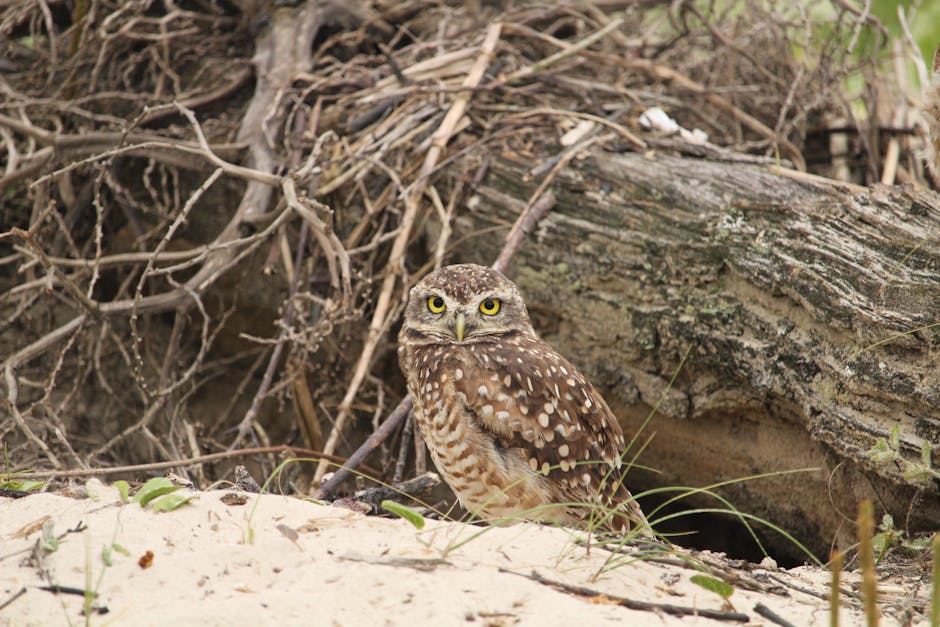Uncategorized
Advantages of Using MySQL for Your BusinessDecember 1, 2024
 How to Obtain Burrowing Owl Permits
How to Obtain Burrowing Owl Permits
When it comes to wildlife species, burrowing owls are among the most captivating, and surprisingly enough, they are quite common in the United States. These small owls have a unique nesting style, as they dig their own burrows to raise their young ones. Burrowing owls are known for their distinctive calls and their ability to adapt to diverse environments, making them a fascinating species to observe and study.
Given the fact that burrowing owls are a protected species under the Migratory Bird Treaty Act, obtaining a permit is a requirement before anyone can capture, possess, or transport them. So, if you are interested in studying and observing burrowing owls, you need to know how to get a permit.
Here is a step-by-step guide on how to obtain burrowing owl permits.
Step 1: Determine the Type of Permit You Need
There are three types of permits available for those seeking to capture, band, or relocate burrowing owls. They include:
a) Scientific Collecting Permit: This permit is issued by the Fish and Wildlife Service (FWS) and is reserved for scientists and researchers studying burrowing owls for scientific purposes.
b) Special Purpose Salvage Permit: This permit is issued by the FWS, and it allows individuals or organizations to remove burrowing owls from sites planned for development.
c) Depredation Permit: This permit is issued by the FWS, and it allows landowners to remove burrowing owls that are causing damage or posing a hazard to their property.
It is essential to determine the type of permit you need before applying. Each permit has different requirements, and the application process varies for each.
Step 2: Gather the Required Information
Before applying for a burrowing owl permit, you need to gather the required information. This includes:
– Contact details: Your name, address, phone number, and email address.
– Site location: The location and size of the site where you plan to capture or relocate burrowing owls.
– Purpose: The purpose of your capture or relocation, whether for scientific research, salvage or depredation.
– Method: The method you plan to use to capture or relocate the burrowing owls.
– Experience: Your experience in capturing or handling wildlife, including burrowing owls.
– Qualifications: Your qualifications, including any relevant training, education, or experience in wildlife conservation or management.
Step 3: Fill Out the Application
Once you have gathered all the required information, it’s time to fill out the application. You can find the application form on the FWS website. The form is a detailed document that requires you to provide all the relevant information needed for the permit.
Make sure you answer all the questions truthfully and accurately, and provide all the required supporting documents and attachments. Applications that are incomplete or incorrect may result in delays or rejection of the permit.
Step 4: Submit the Application
After filling out the application, you need to submit it. You can submit your application online, by mail or in person. The application process takes time, and it is essential to submit your application in advance to avoid delays.
The FWS may take up to 90 days to process your application, depending on the type of permit you are applying for. If you need your permit urgently, you can request expedited processing, but this may come with additional charges.
Step 5: Comply with Permit Conditions
Once you get your burrowing owl permit, you need to comply with all the conditions stated in the permit. Failure to comply with the terms and conditions may result in the revocation or suspension of the permit.
Some of the common conditions include:
– Reporting: You must report your activities, including any captures or relocations, to the FWS.
– Recordkeeping: You need to keep records of your activities and any information requested by the FWS.
– Monitoring: You may be required to monitor the burrowing owl population in the area where you conducted your activities.
– Release: If you captured and relocated burrowing owls, you must release them at an appropriate location.
Conclusion
Obtaining a burrowing owl permit may seem like a daunting task, but it is a requirement for anyone who wishes to study, capture or relocate these majestic birds. By following the above steps, you can acquire a permit and enjoy the experience of studying burrowing owls safely and legally. Remember, these birds are an essential part of the ecosystem, and it is our responsibility to protect and preserve them.
If You Read One Article About , Read This One
0